10 Life-Changing Challenges in the Pamir Mountains
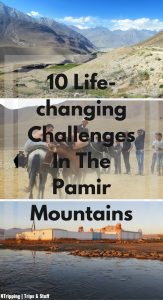
The Pamir Mountains in Central Asia are a place full of extremes.
When you go up thousands of meters above sea level at an altitude where nothing grows and meet hospitable people with huge smiles, you suddenly realize how over-privileged your own life has been.
Being up there makes you wonder how could anyone survive the rough environment, the extreme weather conditions, and the lack of modern facilities, and still have this huge smile on his face.
It feels like whichever God or natural power created the Pamirs, decided to test what lifeforms would survive at some of the harshest conditions on Earth.
A road trip through the Pamir Mountains changes you forever. No matter how prepared you are or how well you think you know yourself until you’ve traveled at The Roof of the World, you know nothing about life.
Here’s why.
Survive Some of the Harshest Conditions on Earth
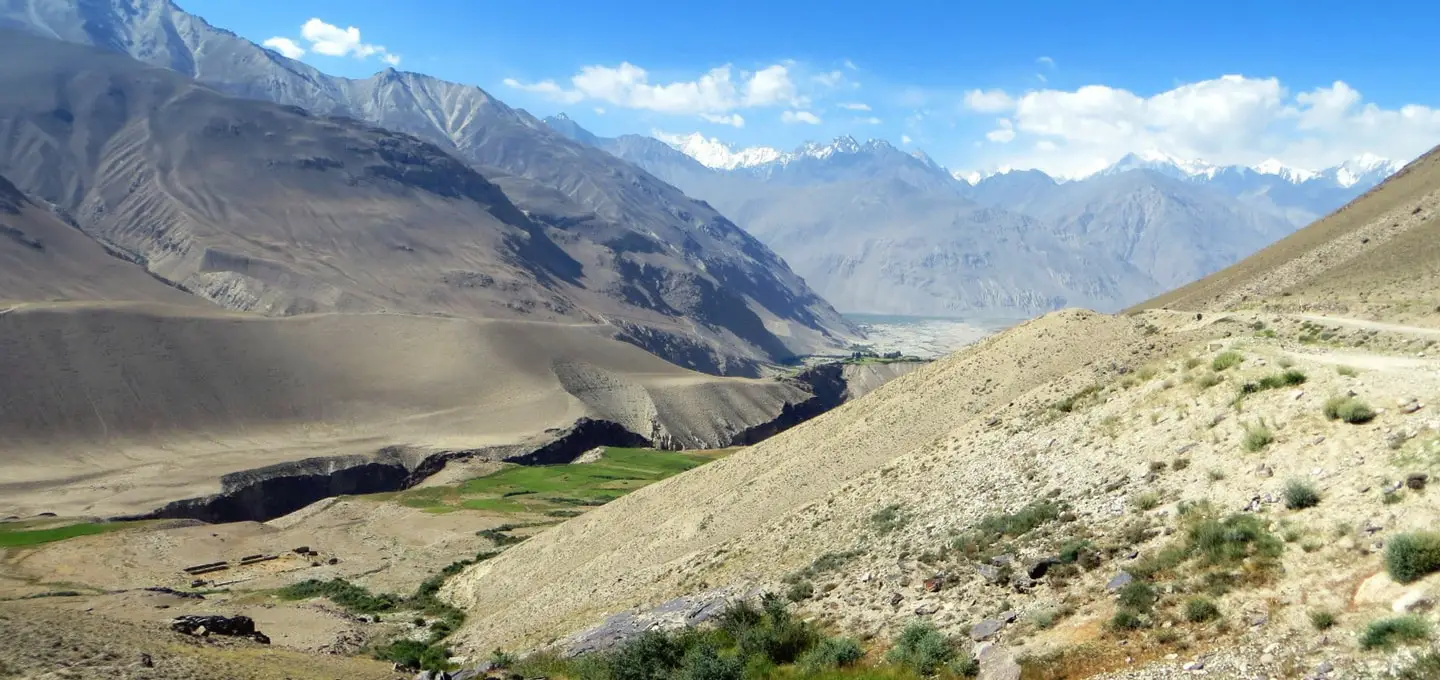
In my humble opinion, instead of calling the Pamir Mountains The Roof Of The World, one should call them God’s Sandbox.
The mountain range with its 7,000 m (23,000 ft) high peaks, shaped like the teeth of a monster, waiting for you to make a wrong move so it can strike and devour you, is a place where nothing grows and still people live, fall in love, get married, and raise their families.
1. Feel the Dangers of the High Altitudes
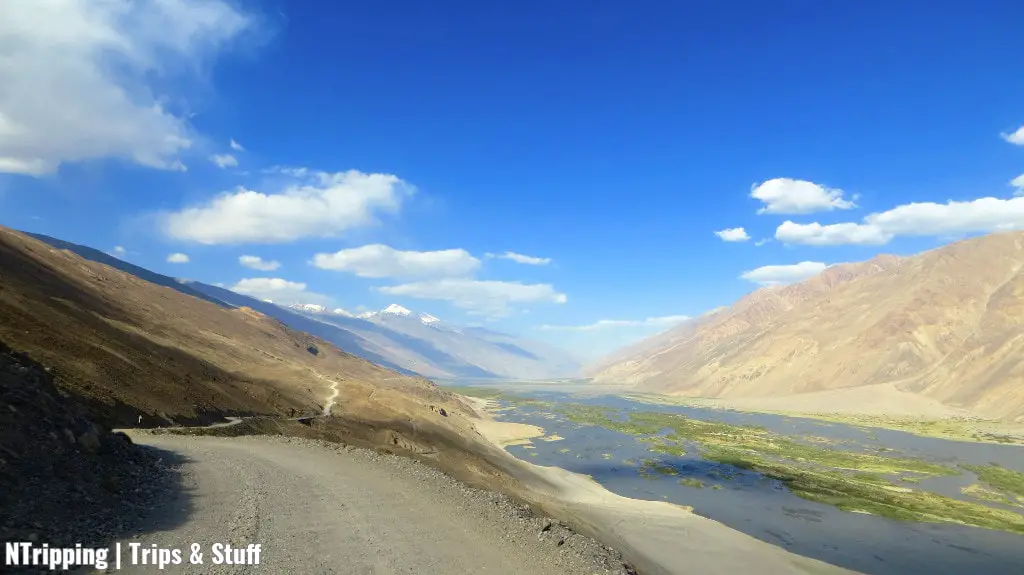
The Pamir Mountains are the third-highest mountain range in the world. They have been known as The Roof of the World from ancient times.
In order to avoid altitude sickness, you shouldn’t sleep at an elevation higher than 500 m (1,640 ft) than the previous night.
Fortunately for us, our tour leader and experienced traveler, Shane “The Travel Camel” Dallas, organized the tour to start in Dushanbe, Tajikistan’s capital, and continue to ascend slowly until we reached the highest point of the trip at 4,655 m, the Ak-Baital Pass.
On day 6, we passed the 3,500 m (11,483 ft) limit, an elevation at which the symptoms of altitude sickness start to show.
From Langar (2,909 m / 9,544 ft) to Alichur (3,865 m / 12,680 ft) the difference in altitude is approximately 1,000 m. The road, however, goes up to 4,344 m (14,252 ft) high at the Hargush Pass. We also added a detour from the main road to visit the lakes Tuz-Kul (the Salt Lake), Bulunkul, and Yashylkul (the Green Lake) at approximately 4,000 m (13,123 ft).
The road between the lakes and the village of Alichur is extremely bumpy. At times, it was better to drive next to the tracks than on them.
When I got out of the car in front of our homestay in Alichur, my legs were shaking. I had to sit immediately on the bench in front of the small mud-brick house.
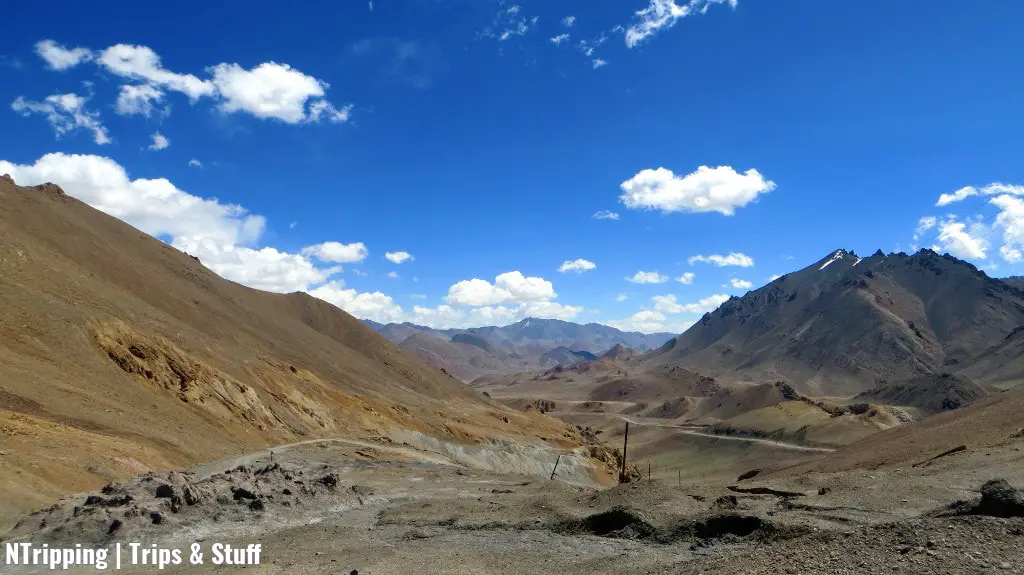
Shortness of breath, high heart rate, lack of appetite, and difficulty sleeping were the effects of the low oxygen levels at these heights. Fortunately, no one experienced anything more severe than this.
Sure, it was difficult to walk around the village but we still did it. How could we miss the opportunity to get a closer look at the lives of the smiling and hospitable people of the High Pamirs?
Every few steps required a stop to catch our breath.
It was hard to even use the toilet. Given it was an outside one, going to the small building a few meters away from the homestay was indeed an effort after which we needed a rest.
Even eating presented a challenge. Chewing and swallowing the tasteless food was already hard but at this altitude, it was even tiring. The moment I felt my stomach was not empty anymore, I would stop eating. Of course, this meant that an hour later I was already hungry.
Drinking a lot of freshly brewed green tea is what the locals advised us to do. I personally enjoyed it and didn’t even miss my morning coffee. Moreover, I think it helped immensely with bringing my heart rate to normal values.
2. Experience Severe Weather
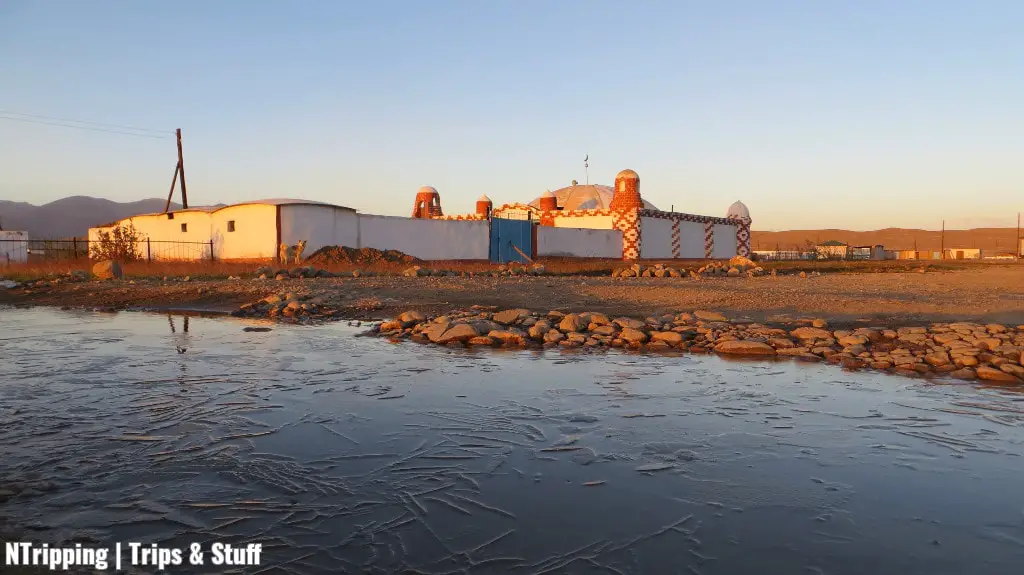
The sun in the Pamir Mountains burns your skin during the day, it is freezing cold in the night and the wind fills your lungs and covers every part of your body with the finest dust when you’re outside.
Alichur Village (3,865 m / 12,680 ft) is the settlement where the lowest temperature in Tajikistan was measured, -60° C (-76° F).
We asked our tour guide Sherali, who was born and lives in the village, about last year’s winter temperatures. “It wasn’t so bad”, he replied. “We only had five days of -53° C (-63.4° F). Then, it got warmer.”
“How much warmer?” we asked.
“-45° C (-49° F). With 35 km/h (22 mi/h) strong winds. ”
We were speechless. None of us had experienced such extreme cold.
“So you stay indoors the whole time?” we guessed.
“On the contrary, we’re outside almost the whole day,” he replied.
He also warned us that despite the fact it had been sunny and about 25° C (77° F) during this mid-August day, the temperatures would fall below 0° C (32° F) at night.
Sure enough, when the call for prayer woke me up the next morning and I wandered the village in the first light of day, ice was covering the streams running through the village.
And the wind made the actual temperature feel even colder.
3. Transport Yourself Back in Time
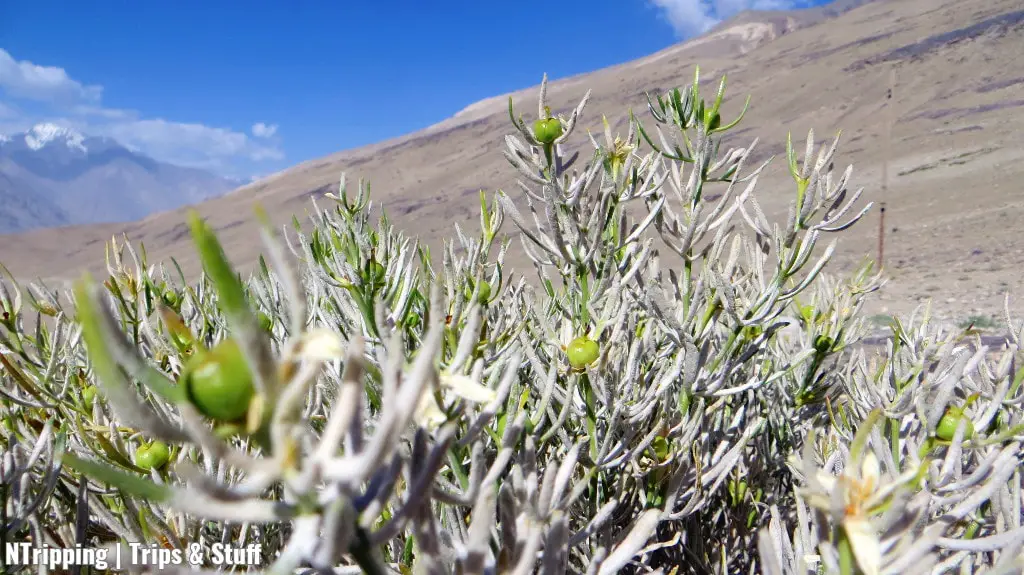
When was the last time you went to bed without showering?
When was the last time you couldn’t charge your phone?
Or when were you last cut off from the rest of the world for more than a few hours?
In the High Pamirs, there is neither running water nor electricity. Cell phone coverage is scarce and WiFi is non-existent.
While I had already visited parts of the world lacking such amenities, my accommodations had always provided a generator and water tanks and this was never an issue.
In the Pamir Mountains, we shared the homes of the people living there. We used whatever little comforts they had. In fact, we were given more than they had for themselves.
Still, toilets were outside, showers were not present at several of the stops, and electricity came from solar panels connected to car batteries.
I was mentally prepared to skip showering for 4 days in a row; fortunately, only on two occasions, we went for two days in a row without a shower.
Wet wipes and disinfectant gel did the job during the “dry” periods. An external battery charger and a flashlight made sure I wasn’t left in the dark.
Cooking and heating seemed to be the biggest challenges in these conditions. Since the Pamir Mountains are a desert, you can imagine how little vegetation grows there.
There are no trees to burn.
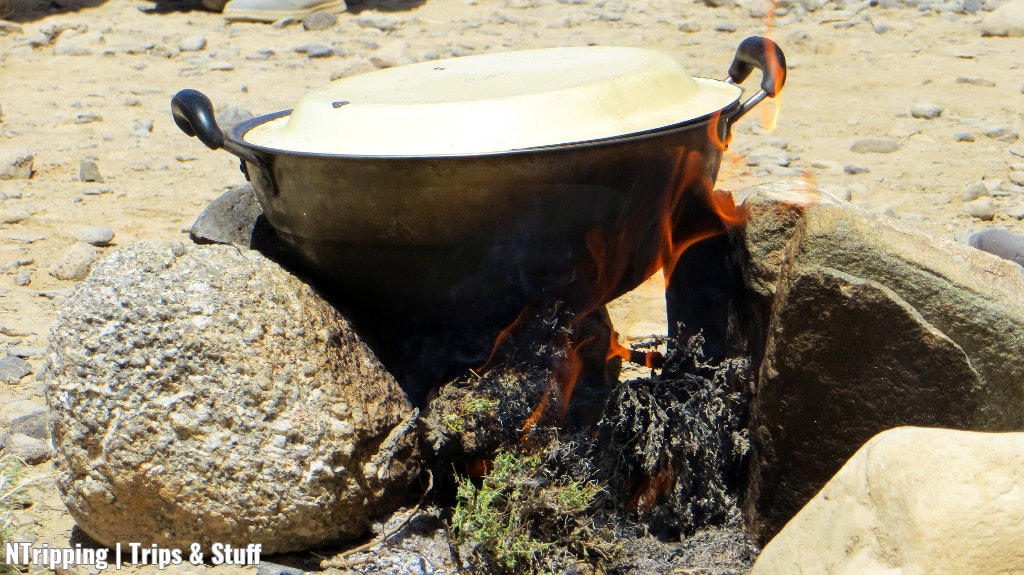
A low shrub fuels the fire for cooking. Not much of the bush grows above the ground. The main part that can burn is the roots. Imagine the fumes from this fire: the smoke stinks from a distance, burns your eyes, and poisons your lungs.
The shrub can’t be used for heating. Instead, people make briquettes from dried yak excrements. Contrary to what comes to mind, they don’t stink but they don’t provide much warmth either. That’s the reason why you can only visit this distant part of the world during the short summer.
4. Eat Food You Can’t Find at Home
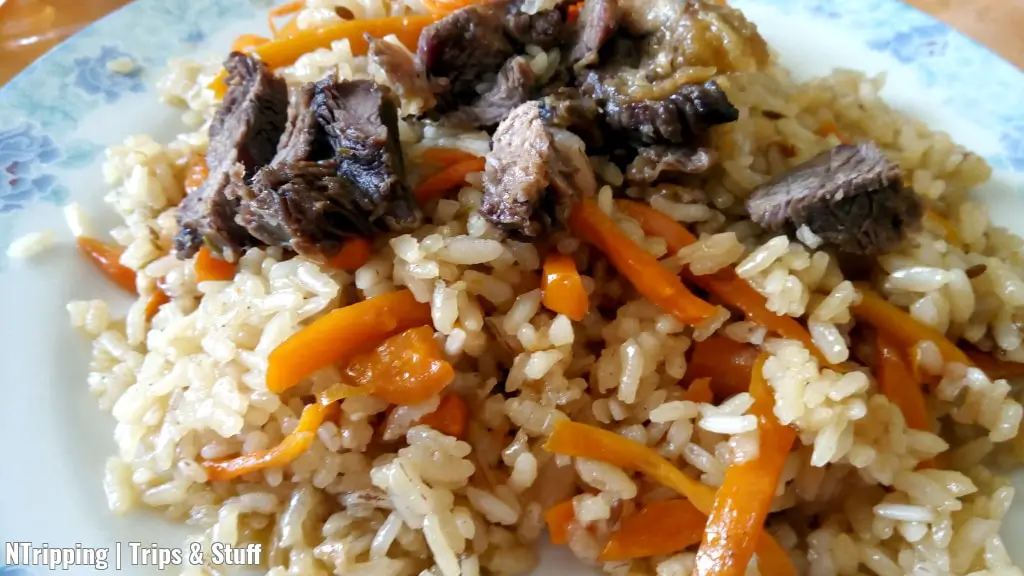
Tasteless.
That is the best description I have of the food in the Pamirs. Despite the fact that the meat and the vegetables were freshly prepared, no seasoning was used and they were not cooked properly.
To make things even more difficult to swallow, the bread was usually dry to the point that it was as hard as a brick.
Coming from the Balkans and being used to the delectable Bulgarian cuisine, I had a real struggle with the flavorless Tajik dishes.
At very few places the food was passable. Only once or twice, it was truly delicious.
The meal we enjoyed the most was a huge plate of extremely greasy spare ribs – from the yak. The meat fell off the bone without an effort. Most of the time while in the Pamirs, though, the meat tasted like rubber.
Curiously enough, the moment we crossed the border with Kyrgyzstan, everything changed – not just the scenery but also the taste of the food. Not only did the desolate Pamir Mountains pull back to give way to the green Alay Valley, but also the cuisine tasted much better.
We were still eating the same dishes prepared with the same ingredients but they were cooked more skilfully and the right seasonings were added to them, hence the huge – and highly appreciated! – difference.
Immerse Yourself in an Unfamiliar Culture
The culture and the traditions of the people living in the Pamir Mountains can’t be more different than your life back home.
Immerse yourself in the unknown at every chance you get to widen your horizons.
Try to move your body to unfamiliar rhythms, indulge in activities typical for this part of the world, and create some unforgettable memories.
5. Dance to Rhythms You’ve Never Heard Before
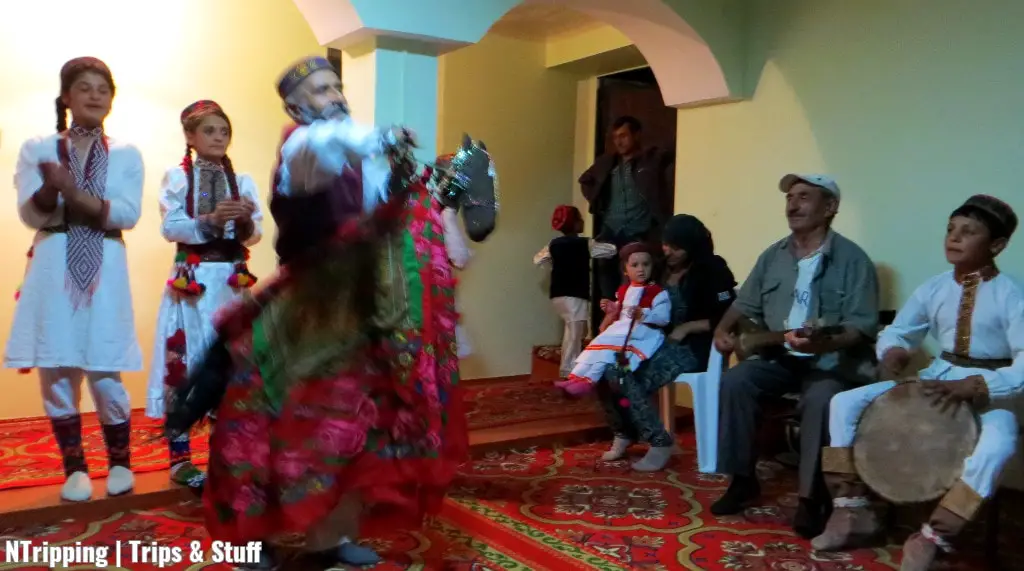
The rhythm of the drum and the 19-string, hand-carved instrument, mixed with the high-pitched voice of the young boy playing the drum, created a hypnotic cacophony.
The girls were graciously dancing to the music and singing in a language we didn’t understand.
It felt absolutely surreal and incredibly divine.
Next thing we know, an old man came forward and started dancing. His rotating movements seemed like a trance dance. Before I knew it, he reached his hand and invited me to join him. Only I couldn’t keep up with his energetic steps and twists and I gave up a few moments later.
We later learned he’s 86 years old! I bet dancing helps you live longer and remain fit despite the challenges life throws at you.
That was in Yamg, a small village in the Panj River Valley at 2,730 m (8,957 ft) above sea level.
A few days later, we were in Murghab, the biggest town in the High Pamirs. The people living here are ethnically Kyrgyz.
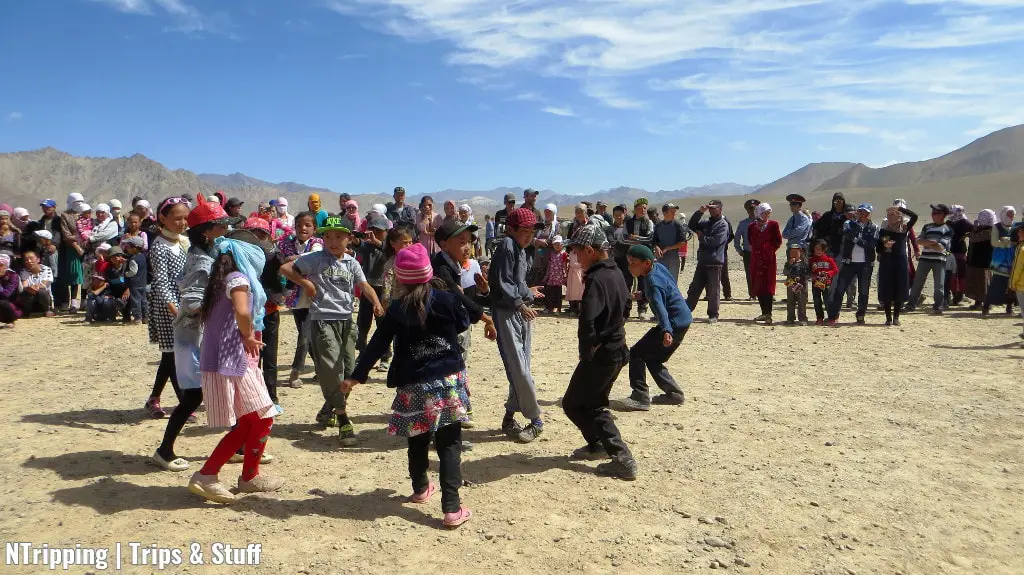
Their music and dances are as different from the Tajik as are their complexions: Tajiks are Caucasian whereas Kyrgyz people are Mongoloid.
Still, it was quite a surprise how different the Kyrgyz music was. While the Tajik music seemed to have predominantly a rhythm to which you perform repeating movements, the Kyrgyz traditional music had an incredible melody to it. The movements were sharper and the whole body took part in the dance.
At the Chabysh festival in Murghab, we managed to dance to a whole song, for approximately 3 to 4 minutes. Afterward, however, we needed triple that time to catch our breath and recover from what normally is a small effort.
At the altitude of 3,620 m (11,870 ft), where Murghab is located, every movement is much harder to the untrained body.
6. Ride a Horse (Or Watch the Experts Do it)
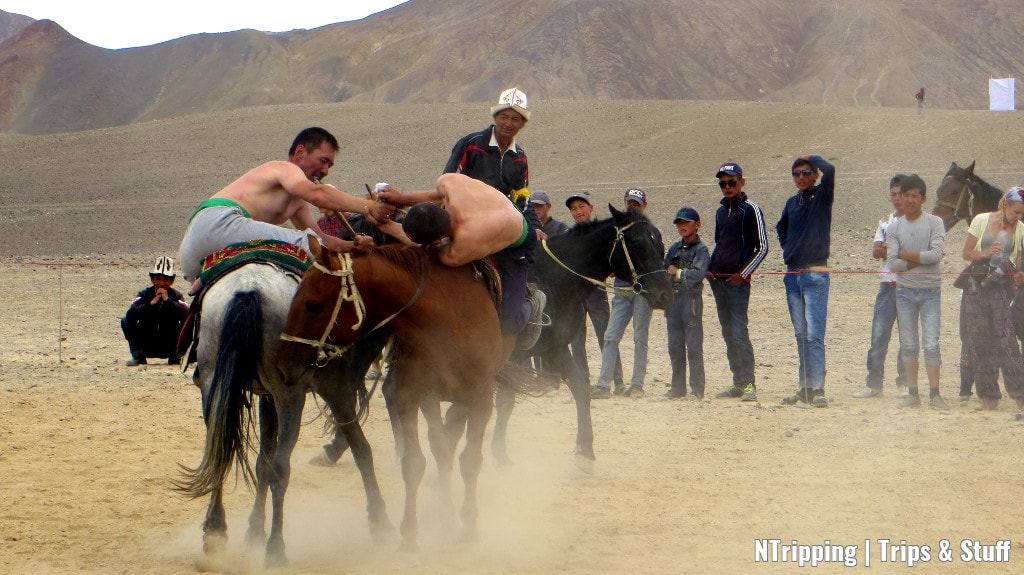
I admit I failed here.
Standing in the saddle, having someone lead the horse on a rope, and enjoying the view felt awesome. However, the moment my guide let go, the horse stopped. I guess it waited for me to control it, which I had no idea how to do.
So, posing on the horse was all I did well.
However, watching the people from the Pamirs ride on their horses during the Chabysh festival in Murghab was an incredible, unforgettable experience.
Except for the horse race, all the other sports were absolutely unfamiliar to us. Goat polo, catch-a-bride, and horse wrestling aren’t exactly the typical sports we watch on TV on weekends.
Despite the burning sun and the harsh wind, which even managed to create a small dust tornado, we spent the whole day outside at the Chabysh festival.
Very few other foreigners mixed with the locals which made the experience very authentic.
I personally liked the horse wrestling best. It takes a lot of skills and fitness to be able to pull your opponent down from his horse.
The first two battles finished without providing a winner, but in the last one, the winner managed to pull his protagonist and place him on his horse.
The crowd was ecstatic and the winner went home with a highly valued prize: a gas stove accompanied by a gas bottle!
7. Soak Your Body in Hot Mineral Springs
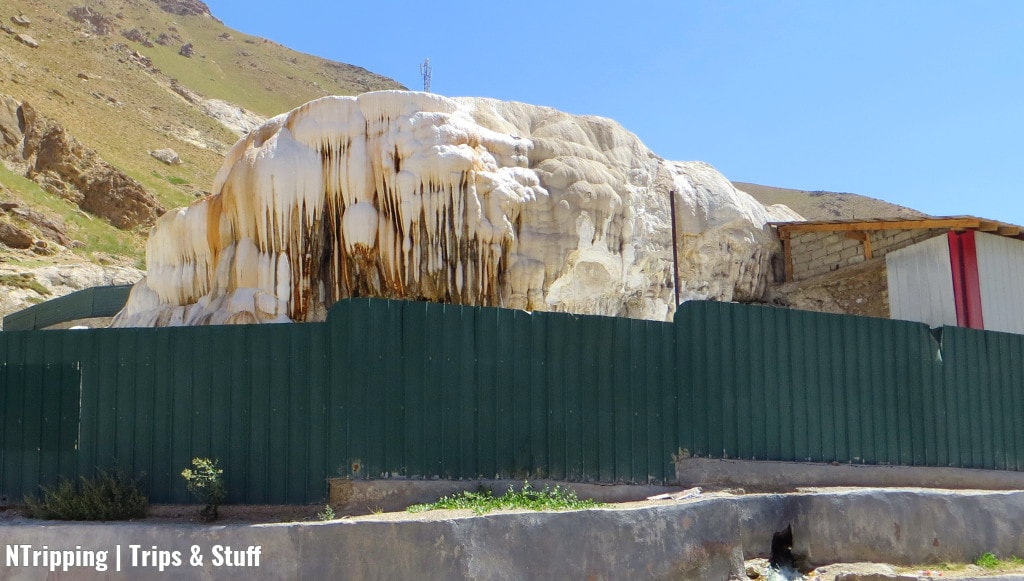
While showers were sparse in the Pamir Mountains, there was an abundance of hot springs in the Panj River Valley. It seemed that every village we passed had at least one hot spring.
The ones we visited were Gram Chashma and Bibi Hatima near the Yamchun Fort. While the hot mineral water in both was extremely pleasant to the body, I would recommend the second one not to be missed.
The Bibi Hatima hot spring is situated within a natural cave with karst formations and waterfalls. Dipping your body in this natural pool feels divine.
Don’t worry about overheating. Once you reimmerse from the hot water, the outside temperature of over 30° C will feel surprisingly cool. However, restrain yourself from physical activities as the dip in the hot spring relaxes the muscles and brings them to a state where every unnecessary effort can trip you over.
In Bibi Hatima, we met many locals, visiting for their weekly bath. You don’t need a shower at home when you can soak your body in the healing hot mineral waters instead!
Interact With the People You Meet
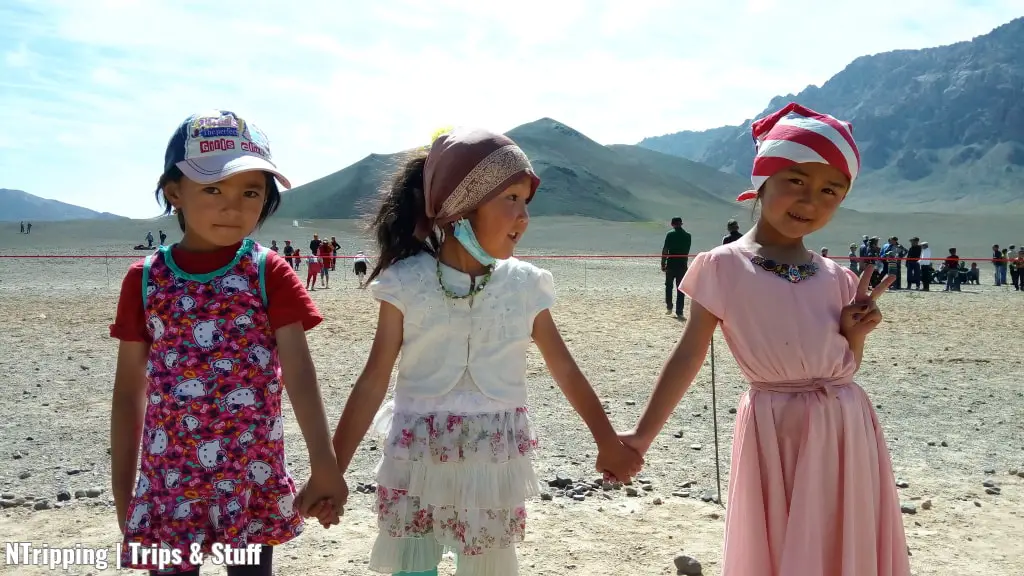
You can learn a lot about a place from the people you meet on the road.
Both locals and travelers we crossed paths with taught us a great deal about human nature and life itself as well as their homes, lives, and desires.
They showed us their houses, shared their tables with us, and told us stories about their families.
8. Experience the Ugly Side of Human Nature
The Pamir Mountains make everyone show his true character.
It is easy to be kind while surrounded by the comforts of your modern home. It is much harder to turn to primitive living and learn to share with fellow human beings.
The Pamirs can break you.
Or fix you.
It is up to you.
You can either enjoy yourself and feel privileged to be here – or be a huge pain in the ass and not stop complaining about everything.
We were given a royal treatment. However, you have to understand, that people in the Pamirs have close to nothing.
So, think carefully before complaining about not being able to always fully charge your 4K cameras. Despite the lack of electricity, for several hours a day, our hosts would turn on car batteries so we could charge our devices.
Think again before making a scene about the dust in your room. Despite the windows being sealed, the strong winds were able to get the fine sand through the tiniest crack.
Because if you still do complain after being here and seeing the tough life conditions – the problem is you, not your host.
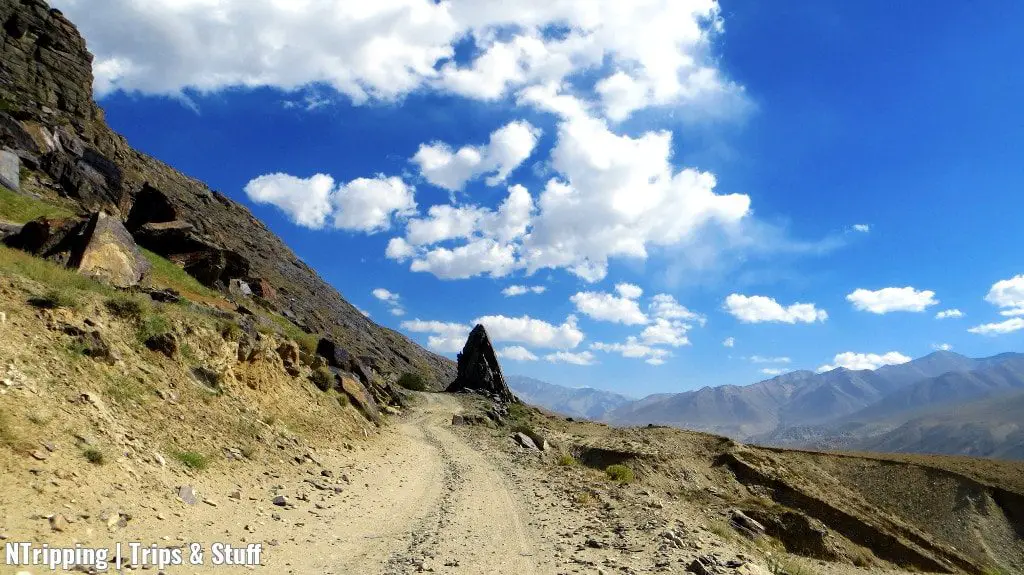
I have never met people who showed such a sense of superiority towards other human beings. Not just in the direction of the welcoming locals but also towards their fellow travelers.
It was as if they were entitled to better treatment than everyone else was. As if they should receive the best food, the most comfortable rooms, even the most spectacular views. No one else had a saying and nobody else’s time and patience were important.
It was ugly and showed all that is wrong with our society. The moment someone feels superior to anyone else, he does not deserve to experience all that is beautiful in this world.
But Karma is a bitch. I’m sure the people who made us ashamed to be part of the same group will get eventually what they deserve. It is, however, an experience I very much hope none of you will have anywhere in the world, not just in the Pamirs.
9. Play Outdoor Games with the Local Kids
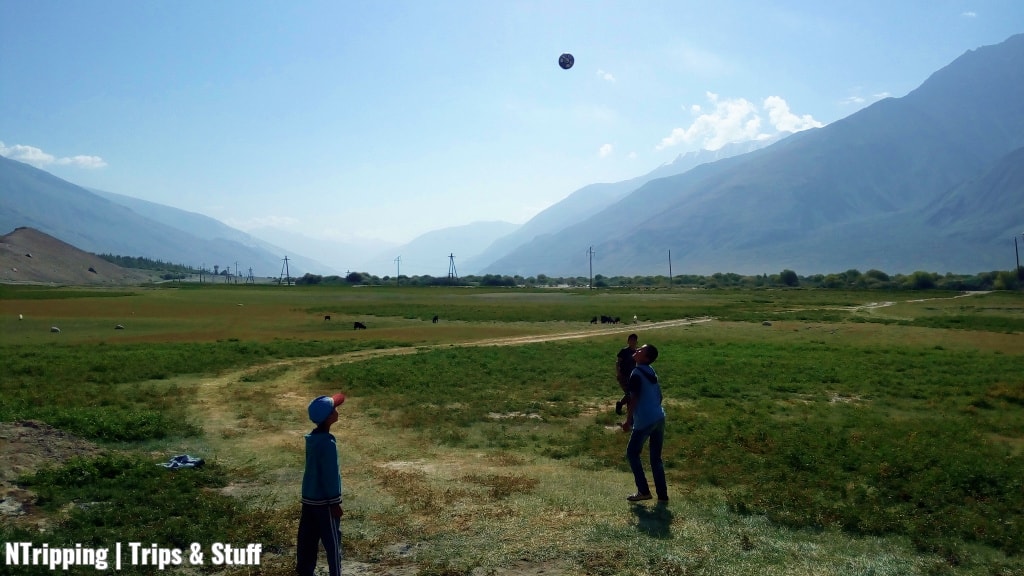
When was the last time you played outside?
I admit I play video games and I’m sure most of you do, too. However, in places where there’s neither electricity nor cell phone signal and WiFi, a ball is all you need to start a game with the local kids.
It was still early in the morning and our group was getting ready to hit the road. The 5-year-old Jovid had a ball but no one to play with. Everyone in his family was busy attending to the tourists or their daily responsibilities.
Three of us had already put our luggage in the car and were waiting for the others to gather their equipment and finish their morning routine.
We shouted to Jovid to pass the ball. He didn’t understand the words but the gestures and our intention were obvious to him.
We started passing the ball on the uneven terrain. Jovid’s smile grew bigger and wider with each trick the four of us made.
Soon after we started our game, the two young shepherds who were watching us from a distance came nearer. At first, they were quite shy, only looking at our game from a distance.
Then we passed the ball to them. It didn’t take long and they joined the circle and started passing the ball. No words were exchanged, only huge smiles and laughter.
Now and then, the young boys ran to their herd to stir the goats back to the pasture. Then they sprinted back to join the game.
I’m not sure how long we played.
But when we left, the smile on Jovid’s face was a sure sign of what was going on in his head. And all it took was a ball and a few strangers, willing to pass it to him on uneven ground in front of his house.
10. Communicate Without Speaking the Native Language
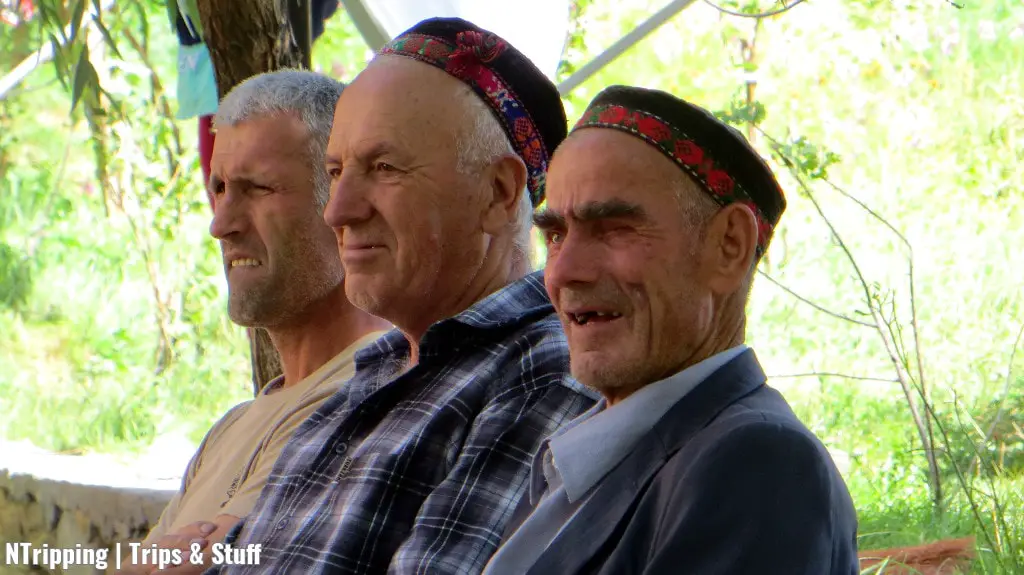
Due to the fact that Tajikistan and Kyrgyzstan are ex-Soviet Union republics, most people in the Pamir Mountains speak Russian.
I admit I had a huge advantage over most tourists who travel through the Pamirs.
As a Bulgarian, I had Russian language classes in my first school years. I also watched Russian television quite often at the time so a few words stuck. Despite the fact, that I could barely construct a whole sentence, I understood quite a bit.
This little knowledge proved to be essential in several situations.
I could, for example, lead a simple “Where are you from? How old are you? Are you married? Do you have children” – a type of conversation on multiple occasions. It gave me an inside into the lives of the people we met I couldn’t otherwise gain.
That’s the reason I think it’s tremendously important to at least try and say a few simple words in the local language. And even if verbal communication fails, a simple smile, a gesture, a wave or a nod can still reveal your intentions.
Are You Prepared for the Challenges of the Pamir Mountains?
The Pamirs are like God’s Sandbox, a place where he’s testing what can survive in some of the harshest conditions imaginable.
The peaks look like the teeth of an enormous monster ready to charge at you. And only the bravest pass through unscarred.
The mountains tested us all. Some revealed their best, others their worst. Some made it to the end of the trip, others broke and left earlier.
But for all, it was a life-changing experience.
Are you willing to experience the challenges of the Pamir Mountains and be transformed? If you are craving an exhilarating journey that will turn the way you look at life upside down, the Pamirs are your dusty, adrenaline-infused cup of tea.
In case you’re already wondering how to get there, you can organize your own logistics with a local driver or even hitchhike the Pamir Highway on a budget.
If, however, you decide that the Pamir Mountains are too much of an effort for you, check these inspiring 12 travel challenges you can immerse yourself in without straying too much out of your comfort zone. The important lesson here is to challenge yourself more often as you grow fastest at the edge of your comfort zone!
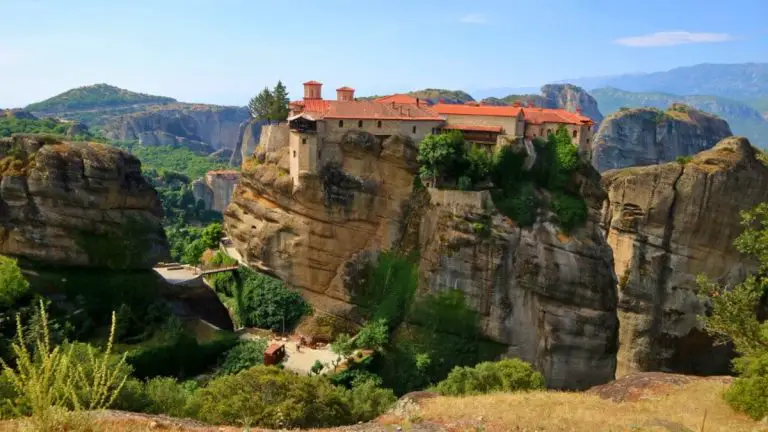
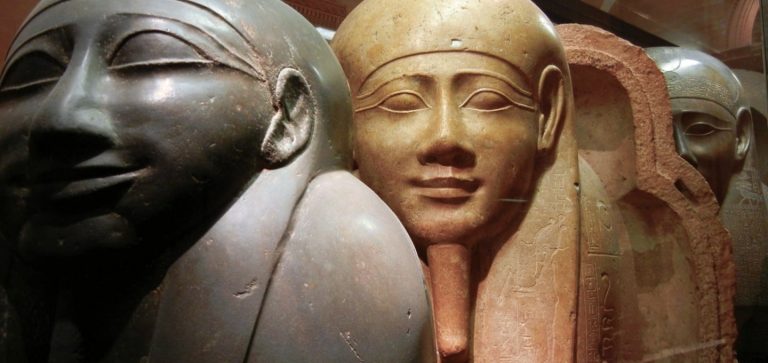
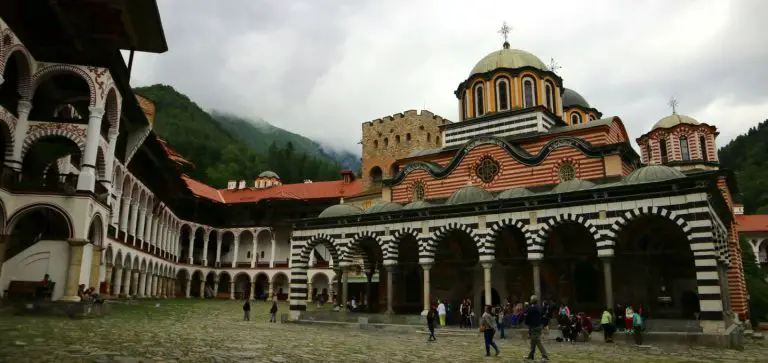
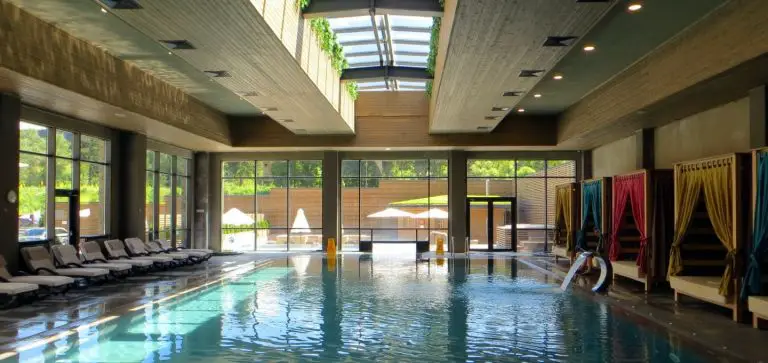
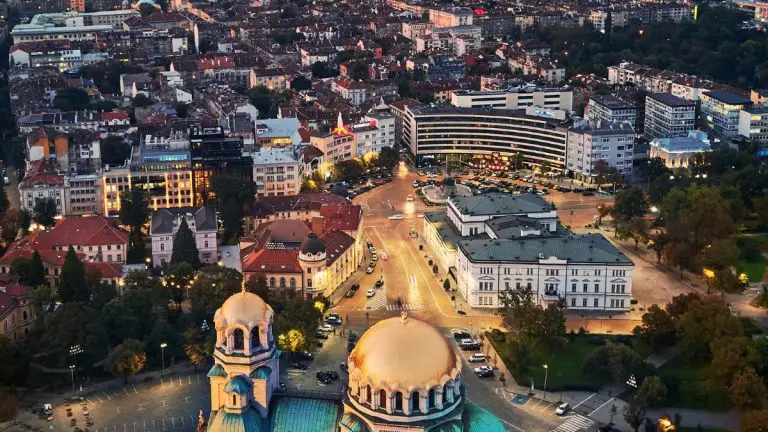
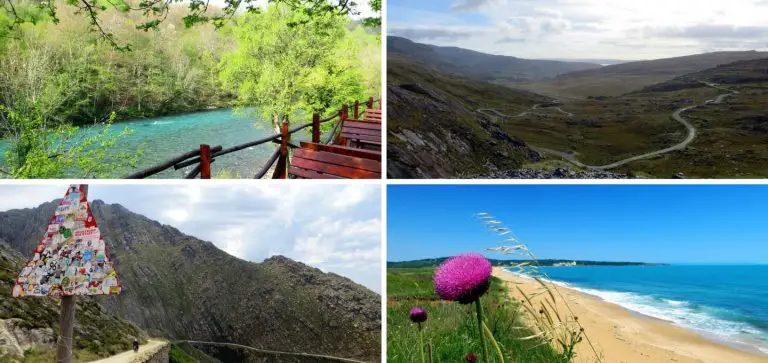
This post is epic in so many forms. But the photos… Wow, I can write essays for each of them. Thank you for narrating us a story about this truly mesmerising region of Earth!
Thank you for your kind words, Svet!
In fact, my photos can merely show the magnificence of the Pamir Mountains! But I’ve tried my best to reveal in simple words the feelings and emotions going through my head while travelling this remote, wild, fantastic part of the world :)
Cheers,
N.
And you have done a marvellous job!
What a privilege to have travelled these roads with you Naddya. What a privilege to have read your beautiful heartfelt words and viewed too few of your magnificent photos. What a privilege to have received unconditional hospitality from the people of the Pamir. The trip still affects me. My own perspectives are set out in my own blogs that are continuing and on the whole are of exhilaration and dancing as we rode along. I fear however, I am not as kind as you to those who did not travel with the unconditional spirit of adventure but preferred to complain and manipulate favours at every opportunity. But you Naddya are one of the Kool Kids…and your spirit soared in the Pamir and was magnificent at every turn. Inspirational, measured blog. Well done.
Thank you for your kind words, Dave! It is a privilege to be part of the Cool Kids :)
As for the others – you get what you give at the end.
Happy travels and looking forward to reading your next post!
A wonderfully, well-written account of your travels Naddya. As the Dancing One has previously stated, it was a privilege to read this journal. Your perspective was refreshing and I hung on every word, even though I was a witness to the events. You were extremely kind to those who journeyed with us who simply did not possess the proper respect for the people and the environs. Many thanks and I look forward to our paths crossing again.
Thanks for this, Dave!
It was great being part of the Kool Kids :)
I hope, too, that we’ll travel and explore new destinations together again!
Cheers,
Naddya
As I read your account of this voyage into the unknown and less traveled part of the world I sat smiling. The Pamir Mountains have impacted us all in many ways. The gracious people who shared their homes, food and lives. The stunning scenery… so breathtaking. One of those world locations you can’t imagine… you must go and stand their to absorb all that is in this amazing land. I find that six months after a trip I really understand all that I experienced. Thank for sharing this extremely well written account of challenges of Mountain life.
I’m glad you enjoyed my post, Merry!
It was an unforgettable trip indeed and it took me some time as well to realise what exactly has happened. I too like to look at trips from the distance of time – after a while the little unimportant things fade away and the important ones tend to stand out even more in my memory. Crossing the Pamir Mountains is definitely one of these trips to remember and cherish for the rest of my life!
Cheers and I hope we do travel again!